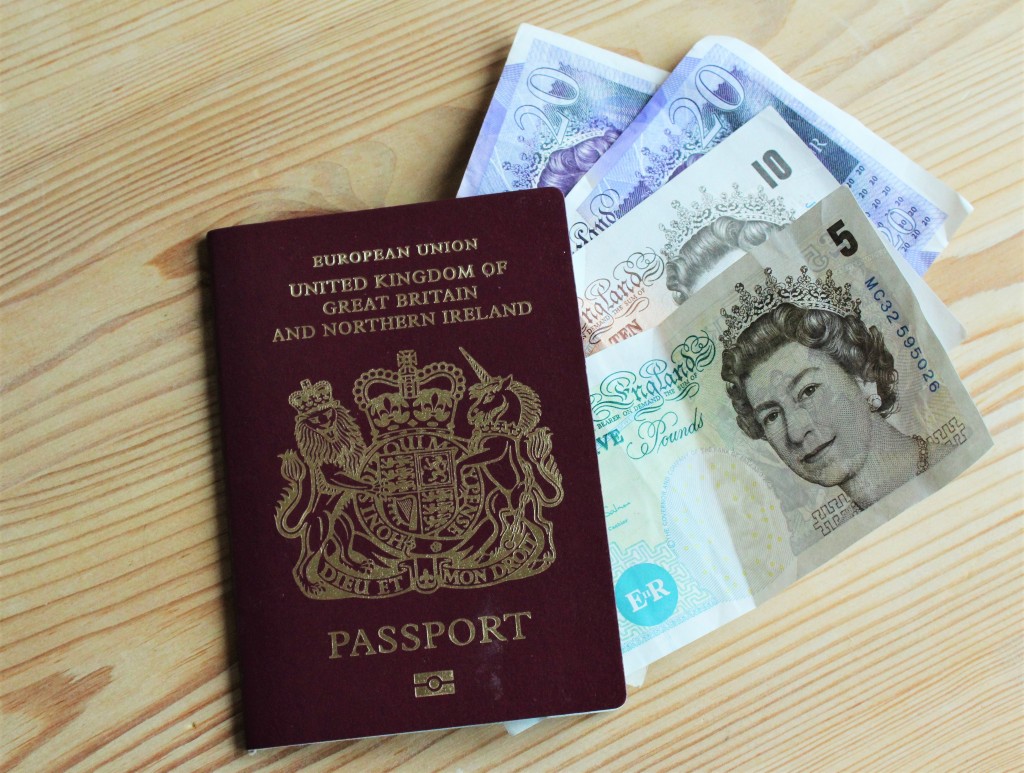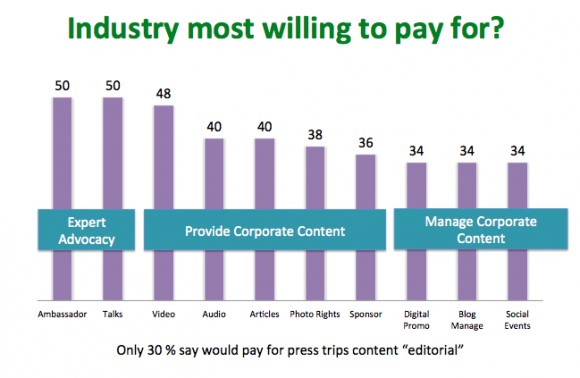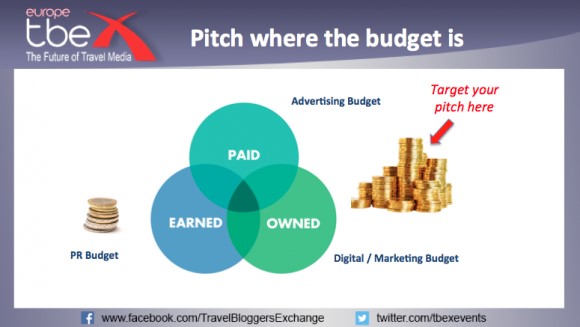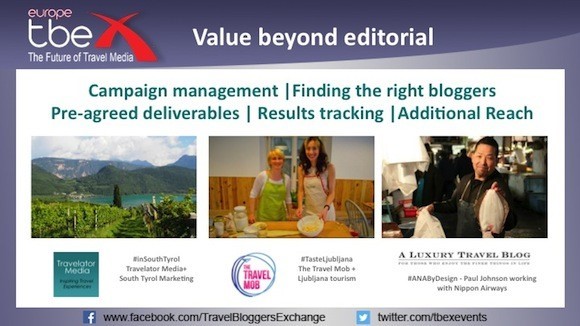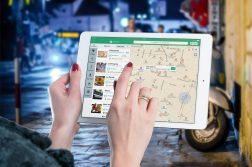Heather Cowper of Heather on her travels and Travelator Media recently spoke at TBEX on “Moving your blog from press trip to paid campaign.” Heather gives us her insights from the talk on how to move your blog towards a paid relationship with travel brands and destinations.
These days the idea of travel bloggers being paid is something of a touchy subject for the PR and marketing folk who work in the travel sector. In the good old days, you would invite a journalist to join a press trip and they would jump at the privilege, the question of payment never arose.
From the blogger’s side things look a little different. That action-packed press trip during during they have to gather information for their blog articles, but also photograph, shoot video and make live updates on multiple social media platforms is starting to look a lot more like hard work. Work that no-one is paying for.
In the survey we carried out before our TBEX talk we received comments from the industry side such as;
“Bloggers need to be more realistic about their payment expectations. They sometimes give the impression that they think a client has an endless pot of budget”.
Despite this 56% of those we surveyed from travel brands said they were willing to pay travel bloggers.
In an effort to bring the two sides of the argument together we decided to look not at “Should bloggers be paid?” but “How can bloggers create value that brands are prepared to pay for?” After all, if you are blogging as a business you need to understand what your customer wants and what they are prepared to pay for. This is what we found;
Pitch where the budget is
The rise of digital has blurred the old divisions between PR, advertising, owned media and SEO but the budgets in most companies are still allocated along these traditional lines. This means that the PR team will probably be operating on a very tight budget on the basis that they are getting ‘free’ coverage from journalists and bloggers. Meanwhile the larger advertising and marketing budget may be held in a different part of the company and used to fund events and promotional campaigns.
Lesson for bloggers: If you are looking to be paid as a blogger you need to build relationships not only with PRs but with budget holders in the marketing teams of the company, since they are more likely to fund broader campaigns involving bloggers.
Provide value beyond editorial
While travel brands find the idea strange of paying bloggers for “editorial” (content to be published on a blogger’s own site) they may be prepared to pay for extras that save them time and money. As an example, they may find it time consuming to find the right bloggers for a project, or not have enough people in house to manage a project, or the skills to track the results.
Lesson for bloggers: Consider what extra value you can add in terms of project management, results tracking or other consultancy that you could build into a package to add value to the other coverage you provide.
Provide content for the sponsor’s blog or publication
While brands are less interested in paying for ‘editorial’ coverage, 43% of those we surveyed were willing to pay for similar content to be published on the brand’s own website or blog. Brands are used to employing freelancers to provide copy for their own websites and publications so bloggers can not only fill the role of expert content providers but can bring their own engaged audience to the party.
Lesson for bloggers: Offer to write on a paid basis for the company’s own website or magazine as part of the package of content you can provide.
Visual content is higher perceived value
Brands would normally pay for professional photography and video so these are perceived as higher value and in our survey 52% said they would consider paying for video and 41% for photo rights. If you can offer high quality photography or video as part of your content package then this may save a travel brand money on commissioning this separately.
Lesson for bloggers: If you have good photography and video skills, leverage these to provide perceived value that brands will pay for. Even if your skills are limited, your smartphone can be used to create quick and easy videos that will enhance your value in the eyes of a sponsor. These days the value of video in social media is as much about engagement as skill, so don’t be shy of giving it a go.
Harness the traditional media
Despite the rise and rise of social media, TV and print publications have a far greater reach than most bloggers can achieve individually, a reach that brands will pay to access. Mainstream media are often looking for ‘experts’ in a particular topic and are happy to feature or quote bloggers in articles, radio or TV shows.
Lesson for bloggers: Cultivate your ‘expertise’ in your specific niche and put yourself forward for paid media opportunities as part of your assignment with a travel brand or destination.
Work hard to build your audience
At the end of the day travel brands are interested in the numbers of potential customers that they will reach through a blogger, so the size and engagement of your audience does matter. Building up a genuine audience of likeminded followers through your blog and social media platform takes time and hard work and if you want be a professional blogger, this should be the foundation of what you do.
Lesson for bloggers: Work hard to provide genuine value and engaging content for a specific niche of followers and you will ultimately build us a following that brands with a similar target audience will pay to access through you.
Read the full article about Heather’s talk with further insights from the survey here and download the full report with 15 detailed case studies of paid blogger campaigns here.

